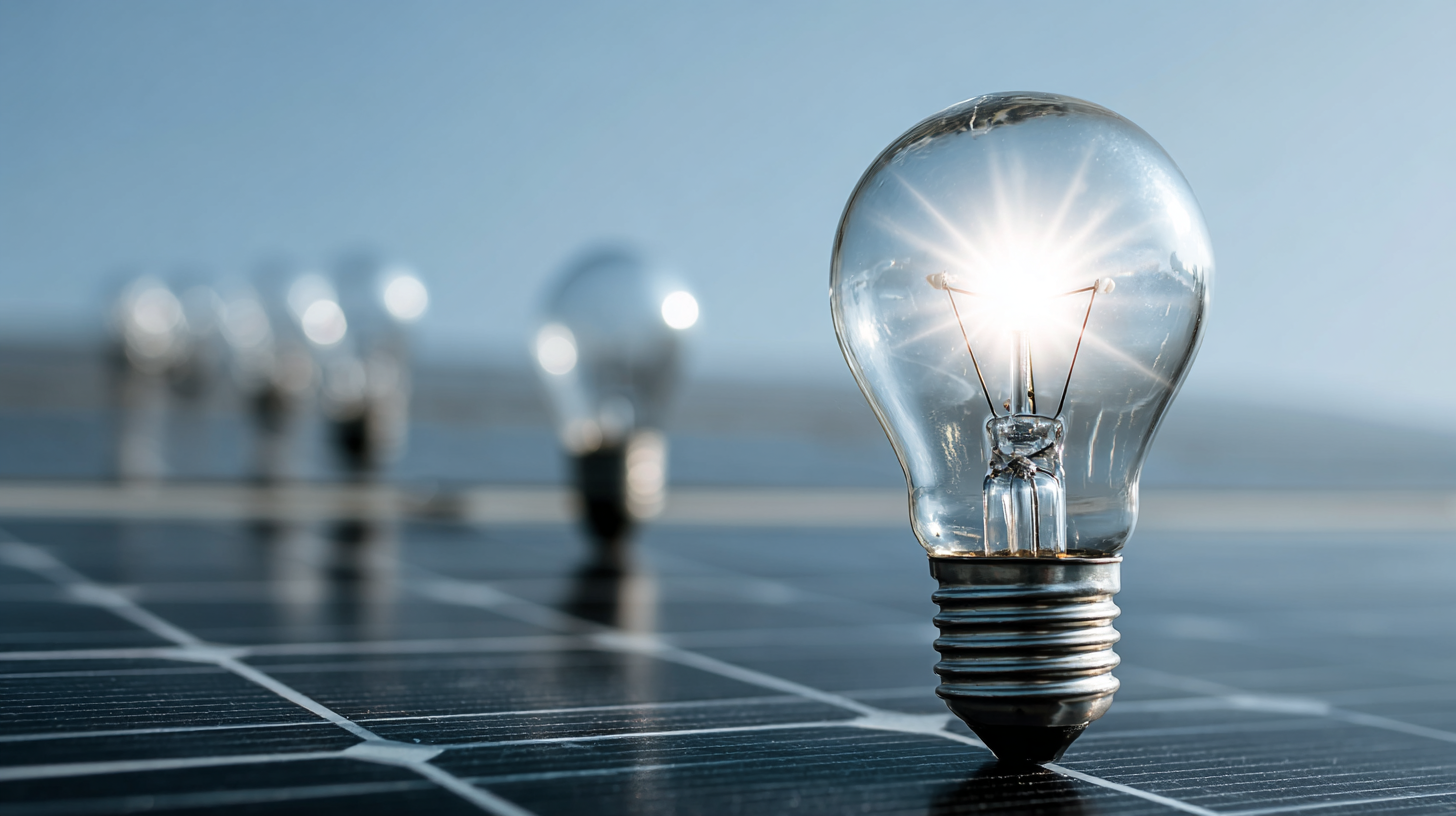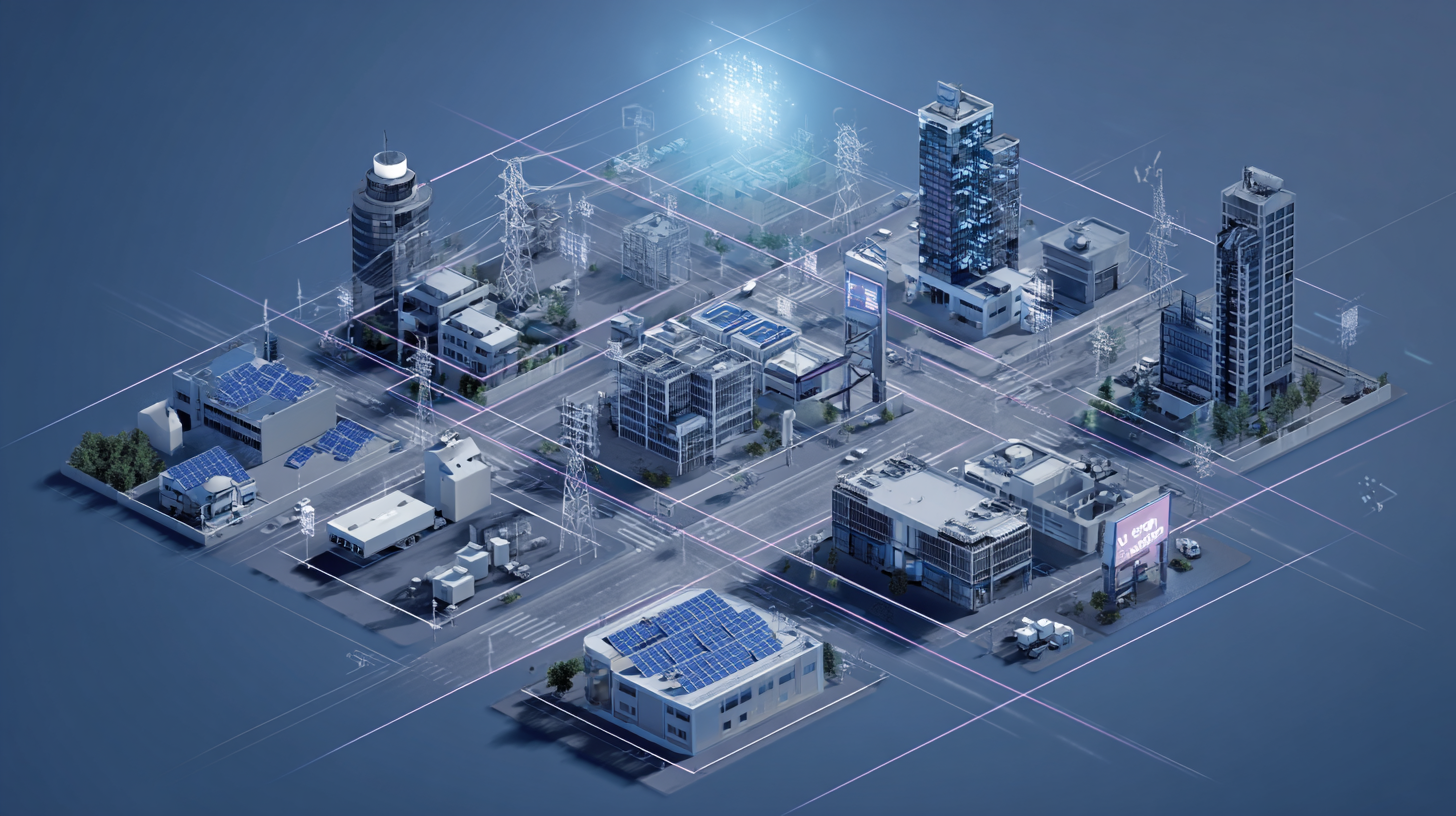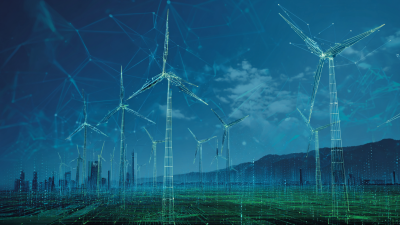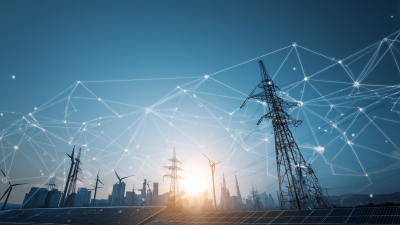Top 10 Innovative Solutions for Energy Efficiency You Need to Know
In today’s rapidly changing world, the need for
sustainable energy practices
has never been more critical. As we confront the challenges posed by
climate change and rising energy costs,
innovative solutions for energy efficiency emerge
as key players in transforming our approach to energy usage. This article explores the
top 10 cutting-edge solutions that not only promise to
enhance energy efficiency but also contribute to a greener and more sustainable future.
From smart technologies that optimize energy consumption to advanced materials designed for
better insulation, the strategies highlighted here are not merely theoretical. They are
practical applications poised to revolutionize how businesses and households operate. By
integrating these solutions for energy into daily practices, we can significantly reduce
our carbon footprint while also reaping the economic benefits of lower energy costs and
increased productivity. Join us as we delve into these innovations that are reshaping the
landscapes of energy efficiency and driving the transition towards a more sustainable world.

Understanding Energy Efficiency: Key Metrics and Industry Trends Driving Innovation
 Energy efficiency has emerged as a pivotal focus in the quest for sustainable solutions, driven by a growing awareness of climate change and resource scarcity. Key metrics, such as energy consumption per unit of output and overall carbon emissions, play a critical role in assessing the effectiveness of various innovations. Industry trends indicate a shift toward more integrated and intelligent energy management systems, paving the way for advancements in renewable energy sources and smart grid technologies.
Energy efficiency has emerged as a pivotal focus in the quest for sustainable solutions, driven by a growing awareness of climate change and resource scarcity. Key metrics, such as energy consumption per unit of output and overall carbon emissions, play a critical role in assessing the effectiveness of various innovations. Industry trends indicate a shift toward more integrated and intelligent energy management systems, paving the way for advancements in renewable energy sources and smart grid technologies.
As businesses and consumers alike prioritize sustainability, the development of energy-efficient technologies is accelerating. Innovations such as advanced building materials, LED lighting, and energy-efficient appliances are at the forefront of this transformation. Furthermore, the rise of Internet of Things (IoT) devices enables real-time monitoring and analysis of energy use, fostering behavioral changes that lead to reduced consumption. Staying informed about these metrics and trends is essential for anyone looking to embrace energy efficiency and contribute to a more sustainable future.
Smart Building Management Systems: Revolutionizing Energy Use in Commercial Real Estate
Smart Building Management Systems (BMS) are transforming energy usage in commercial real estate by integrating advanced technologies to monitor and control building operations. According to a report by McKinsey & Company, buildings account for approximately 40% of global energy consumption, making energy efficiency initiatives critical for reducing overall energy use. Innovative BMS solutions leverage IoT sensors, machine learning algorithms, and data analytics to optimize lighting, heating, and cooling systems, translating into a significant reduction in energy costs. In fact, studies show that buildings with smart management systems can reduce energy consumption by up to 25%.
**Tips:** Implementing a BMS can be a game-changer for commercial spaces. Start by conducting an energy audit to identify areas of improvement and potential savings. Investing in real-time monitoring technologies can help facility managers make informed decisions that lead to increased energy efficiency.
Moreover, these systems enhance occupant comfort by adjusting conditions based on usage patterns and preferences. A report from the U.S. Department of Energy highlights that energy-efficient buildings not only lower operational costs but also improve tenant satisfaction, leading to higher retention rates. By embracing smart management technologies, real estate owners can create more sustainable and profitable environments.
**Tips:** Engage occupants in energy-saving initiatives by creating awareness programs. Simple measures like encouraging employees to turn off lights and equipment after hours can lead to significant cumulative energy savings.
Energy Efficiency Solutions Comparison
The Role of Artificial Intelligence in Predictive Energy Consumption Analysis
Artificial Intelligence (AI) is revolutionizing the way we approach energy efficiency by facilitating predictive energy consumption analysis. By harnessing the power of machine learning algorithms and data analytics, AI can identify patterns in energy usage that humans might overlook. This proactive approach not only helps businesses and homeowners reduce their carbon footprint but also translates to significant cost savings.
For instance, AI systems can analyze historical energy consumption data and forecast future usage, enabling smarter decisions regarding energy procurement and consumption strategies.
Tips for implementing AI in energy efficiency include starting with a robust data collection process. Ensure that you have access to comprehensive energy usage data from various sources, such as smart meters and IoT devices. Another vital tip is to invest in AI software that integrates seamlessly with your existing systems, allowing for real-time analysis and monitoring of energy consumption.
Moreover, leveraging AI can lead to optimized energy usage strategies, such as adjusting heating and cooling systems based on predictive analytics. This can help maintain comfort while significantly lowering energy bills. By staying ahead of energy needs through AI insights, organizations can make informed decisions that promote sustainability and operational efficiency.
Renewable Energy Integration: Maximizing Efficiency through Hybrid Systems
Hybrid systems that integrate renewable energy sources like solar, wind, and energy storage can significantly enhance energy efficiency. According to the International Renewable Energy Agency (IRENA), integrating these technologies allows for optimal energy use, reducing dependency on fossil fuels and minimizing greenhouse gas emissions. For instance, a study found that implementing hybrid systems could improve energy output by 15-30%, especially in off-grid areas. By effectively combining generation sources, such systems balance supply and demand, ensuring energy availability during fluctuating conditions.
Tips for maximizing efficiency in hybrid systems include conducting a thorough energy audit to identify specific needs and inefficiencies within your setup. Additionally, investing in smart grid technology can optimize energy distribution and enhance system responsiveness. Moreover, leveraging energy management software enables real-time monitoring and data-driven decisions, further increasing overall efficiency. By embracing these approaches, businesses and households can achieve substantial savings while contributing to a more sustainable energy future.
Top 10 Innovative Solutions for Energy Efficiency
| Solution | Description | Efficiency Improvement (%) | Implementation Cost ($) | Payback Period (Years) |
|---|---|---|---|---|
| Solar PV Systems | Integration of solar panels for residential and commercial energy needs. | 20 | 15,000 | 5 |
| Smart Thermostats | Adaptive heating and cooling systems for optimal temperature control. | 10 | 300 | 1 |
| LED Lighting | Energy-efficient lighting solutions that consume less electricity. | 75 | 200 per unit | 0.5 |
| Energy Storage Systems | Batteries and systems to store generated energy for later use. | 30 | 8,000 | 4 |
| Energy Management Systems | Software and hardware solutions for monitoring and managing energy consumption. | 15 | 5,000 | 3 |
| Geothermal Heat Pumps | Systems that utilize ground temperature for heating and cooling. | 50 | 20,000 | 7 |
| High-Efficiency HVAC Systems | Advanced heating, ventilation, and air conditioning technologies. | 25 | 15,000 | 5 |
| Building Automation Systems | Technology that automates building operations to improve energy efficiency. | 20 | 10,000 | 4 |
| Insulation Upgrades | Improvement of building insulation to reduce energy loss. | 35 | 4,000 | 2 |
| Wind Energy Solutions | Utilization of wind turbines for renewable energy generation. | 40 | 25,000 | 6 |
Innovative Insulation Materials: Advances that Reduce Heating and Cooling Costs by 50%
Innovative insulation materials are revolutionizing the way we manage energy efficiency in our homes and buildings. With advancements in technology, new types of insulation can reduce heating and cooling costs by as much as 50%. This is particularly noteworthy as energy prices continue to rise and climate concerns grow. Materials such as aerogel, vacuum insulated panels, and phase-changing materials are at the forefront of providing superior thermal performance while being lightweight and easy to install.
When considering insulation options, be sure to look for products that align with your specific climate and building needs. Tips for improving energy efficiency include sealing gaps and cracks in your home to prevent drafts, selecting insulation that has a high R-value for better thermal resistance, and opting for eco-friendly materials that minimize environmental impact while maximizing comfort.
Additionally, staying informed about the latest innovations can lead to significant long-term savings. Keep an eye out for emerging technologies such as smart insulation systems that can adapt to changing temperatures or advanced reflective materials that enhance energy savings. By integrating these innovative solutions, homeowners can not only lower their energy bills but also contribute to a more sustainable future.

Related Posts
-

What is Energy Solutions and How They Impact Global Sustainability Efforts
-

Revolutionizing Energy Solutions: Innovative Approaches for a Sustainable Future
-

Innovative Energy Solutions: Transforming Sustainability for a Greener Future
-

Harnessing Smart Grid Energy Innovations at the 2025 China Import and Export Fair
-

Wind Farm Energy Innovations at 2025 China Import and Export Fair: Harnessing a $1 Trillion Industry
-

Harnessing Power Energy for a Sustainable Future The Role of Renewable Sources in Global Energy Consumption

